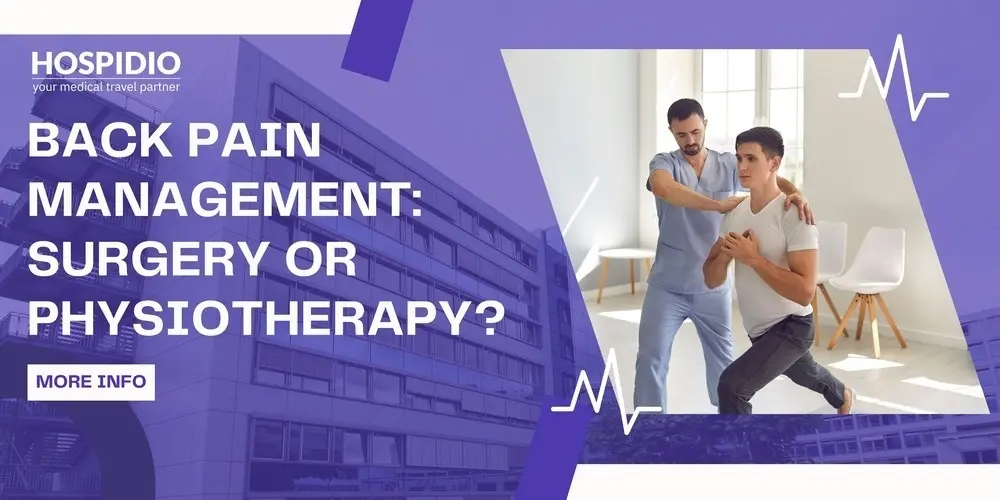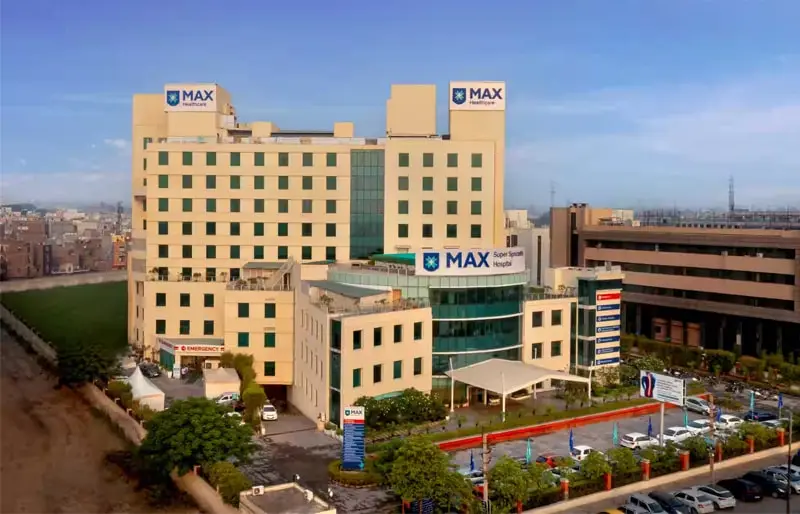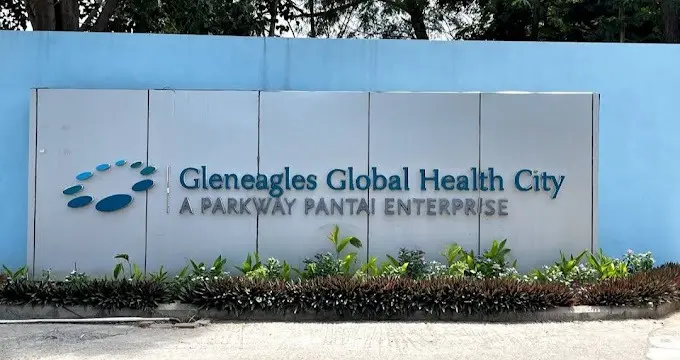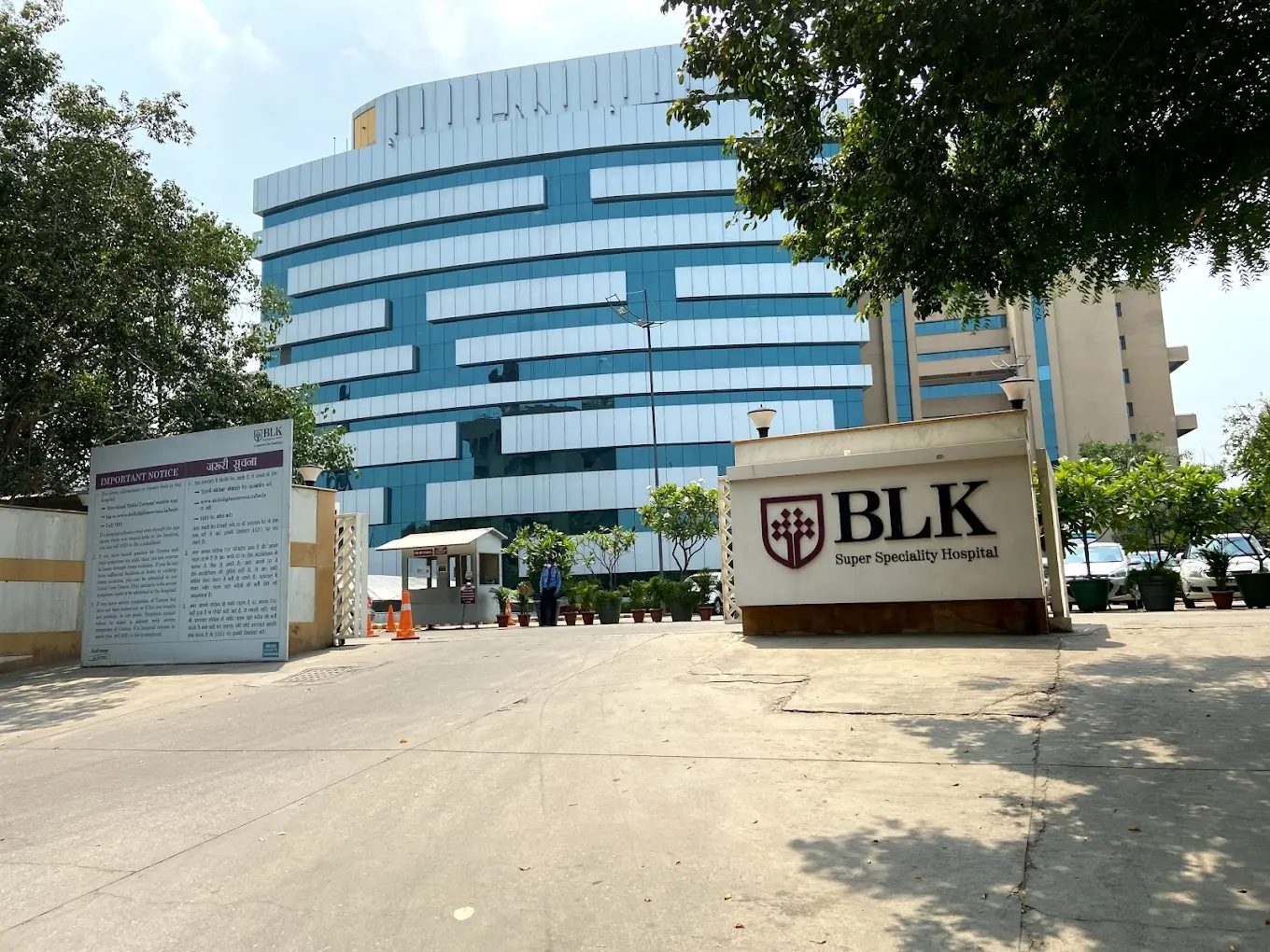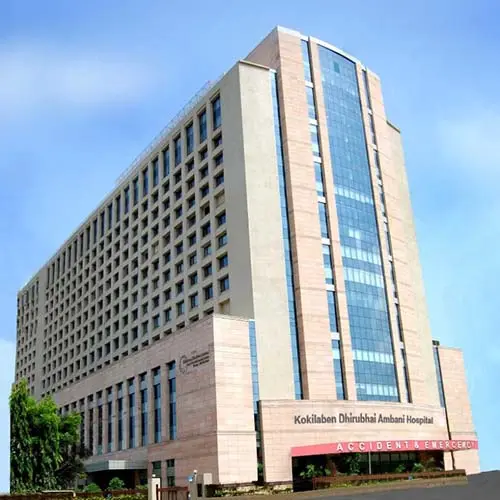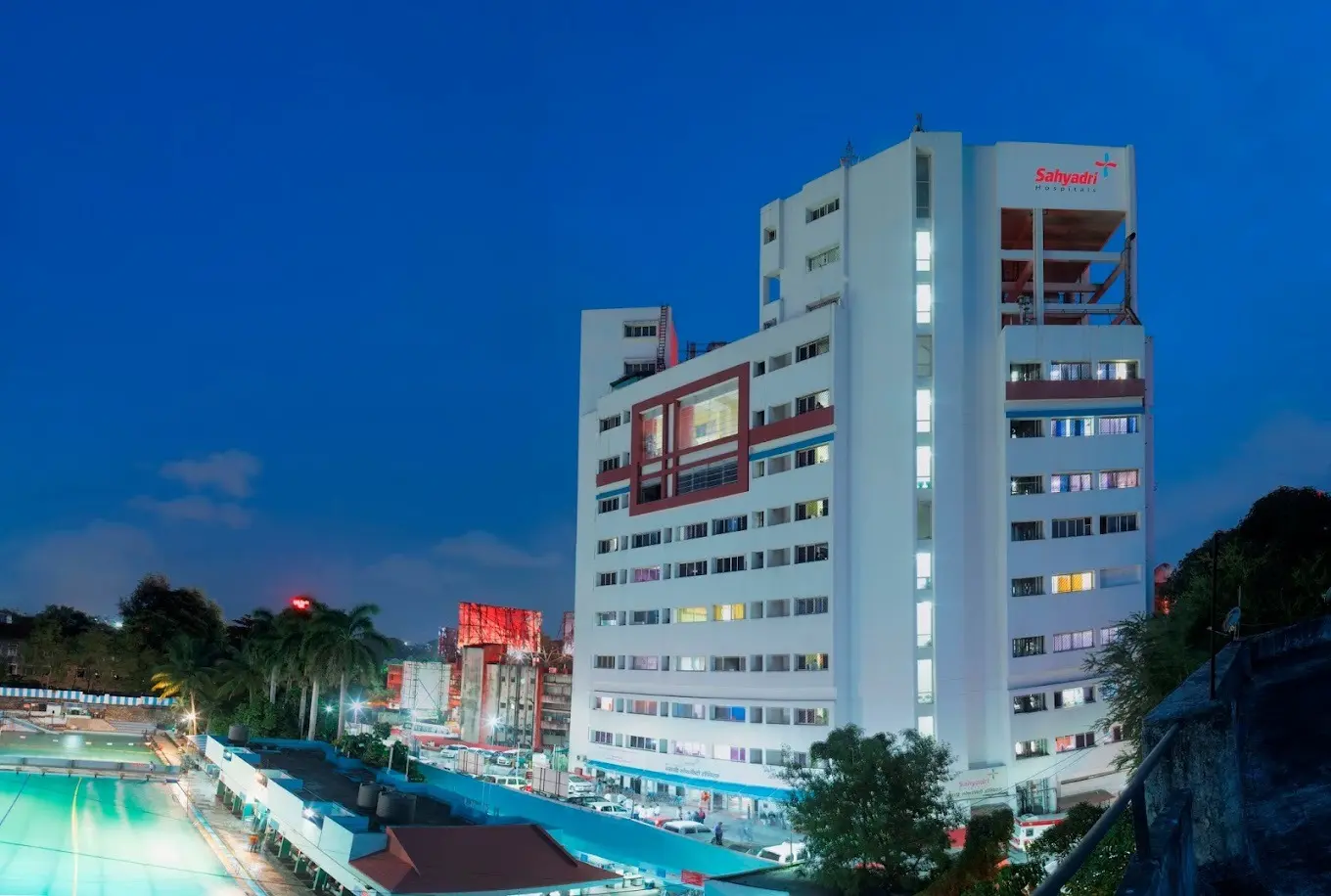Back pain—it’s something almost all of us deal with at some point. In fact, studies suggest that nearly 80% of people will experience back pain in their lifetime. Whether you’re hunched over a desk, lifting heavy loads, playing sports, or simply feeling the effects of time, back pain doesn’t play favourites. It can strike anyone, anywhere, at any stage of life.
What might start off as a mild, annoying ache can quickly turn into something more serious. For some, it becomes a constant companion, making it hard to sleep, walk comfortably, or get through daily routines without discomfort. While many people find relief with a bit of rest, stretching, or over-the-counter medication, others struggle with ongoing symptoms that begin to interfere with their quality of life.
That’s when the big question arises: is surgery the only option, or can physical therapy and other non-invasive treatments actually bring lasting relief? This is a common crossroads for many people living with chronic or severe back pain. In today’s medical world, the two most talked-about treatment paths are surgery and physical therapy. Each approach has its own strengths and challenges, and choosing the right one isn’t always straightforward.
Understanding the difference between these two routes is key to making a decision you can feel confident about. Some cases absolutely call for surgery—especially when nerve compression or structural damage is involved. But in many situations, structured physical therapy, lifestyle adjustments, and consistent care can be just as effective, without the risks and recovery time that come with surgery.
In this blog, we’ll take a closer look at the most common causes of back pain and explore when surgery might be necessary and when it might not. We’ll also dive into how physical therapy works, what kinds of back pain it can treat, and how it stacks up as a long-term solution. If you're looking to avoid surgery, learn about non-surgical alternatives, or simply understand your options better, this guide is here to help you navigate your way forward—with clarity, confidence, and hope for a healthier back.
Get a free cost estimate
Common Causes of Back Pain
Understanding the root cause of back pain is the first and most crucial step toward effective treatment. The spine is a complex structure made up of bones (vertebrae), discs, muscles, ligaments, and nerves. When any part of this structure is injured, inflamed, or degenerates over time, it can lead to discomfort ranging from mild aches to severe, disabling pain.
Here are some of the most common causes of back pain:
Herniated Disc
A herniated disc refers to an issue with one of the rubbery cushions known as discs that sit between the bones that stack to form the spine, known as a herniated disc. We refer to these bones as vertebrae.The nucleus is the soft, jelly-like core of a spinal disc. The annulus, a harder, rubbery outer layer, surrounds the nucleus This can irritate nearby spinal nerves, leading to pain, numbness, or weakness in the back, legs, or arms. This condition is a frequent cause of sciatica—a sharp, radiating pain down one leg. Herniated discs are most common in the lower (lumbar) spine but can also occur in the neck (cervical spine).
Sciatica
Sciatica happens when the sciatic nerve, the longest nerve in the body, gets irritated or compressed. This often results from a herniated disc or spinal stenosis. The sciatic nerve is the longest nerve of the body, which extends from the lower back down the leg and into the foot People with sciatica typically feel a sharp, shooting pain that starts in the lower back and travels down through the buttock and leg. It can range from uncomfortable to downright debilitating. The good news is that most cases can be treated with conservative care like physical therapy, rest, and medication. But when the pain is severe or persistent, surgery may be needed to relieve the pressure on the nerve.
Degenerative Disc Disease
The discs between our vertebrae, which support and cushion our spine, naturally begin to degenerate as we age. This process is termed degenerative disc disease. Inflammation, instability, and that all-too-familiar lower back pain or stiffness can result from the discs' gradual loss of height and flexibility. Even though it is the normal ageing process, not everyone experiences the wear and tear in the same manner. For some people, it can lead to ongoing pain and limited movement, making everyday activities more challenging. In fact, it’s one of the most common reasons older adults deal with chronic back pain.
Spinal Stenosis
The narrowing of the space inside your spine causes spinal stenosis, which puts pressure on the spinal cord or adjacent nerves. It can produce discomfort, tingling, numbness, or muscular weakness, usually in the arms or legs, and is most frequent in the neck and lower back. Leaning forward, such as while pushing a shopping cart or walking uphill, makes many individuals with spinal stenosis feel better. This is due to the fact that bending slightly can assist relieve pressure on the nerves and increase the amount of space in the spine. Spinal stenosis can progressively worsen over time, and in certain situations, surgery may be required to assist restore movement and lessen discomfort, even if symptoms can frequently be controlled with therapy or medication.
Muscle Strain
One of the most frequent and benign causes of back pain is a simple muscle or ligament strain. This can result from lifting heavy objects improperly, poor posture, sudden awkward movements, or overuse during physical activity. Though typically not serious, muscle strain can cause acute pain, stiffness, and limited range of motion. Fortunately, it often responds well to non-surgical treatment for back pain, including rest, ice, stretching, and physical therapy.
Spondylolisthesis
A condition known as spondylolisthesis occurs when a vertebra in your spine shifts out of alignment and passes over the one underneath it. In addition to making the spine unstable, this misalignment can occasionally exert strain on neighbouring nerves. There are several causes for it: some people have a spinal abnormality from birth, while others get it as a result of stress fractures, arthritis, trauma, or just normal wear and tear. It is particularly prevalent among sportsmen, such as football players and gymnasts, who bend or twist their backs often. Lower back discomfort, stiffness, and occasionally limb weakness or tingling are common symptoms. The severity of the condition determines the course of treatment; some patients respond well to physical therapy and rest, while others might eventually need surgery to stabilise the spine and relieve nerve pressure.
Best Hospitals for Spine Surgery in India
When Physical Therapy Is Effective For Back Pain?
When it comes to non-surgical treatment for back pain, physical therapy (PT) is often the first and most recommended approach. Back pain can stem from many issues—poor posture, weak core muscles, muscle imbalances, or mild structural abnormalities—and in many of these cases, physical therapy provides an effective, long-lasting solution.
Unlike medications that only mask the pain, physical therapy addresses the root cause of the problem. It not only relieves pain but also strengthens and stabilises the spine, reduces inflammation, and restores mobility. For those wondering about spine surgery alternatives, PT offers a safe, structured, and evidence-based approach to recovery without the risks associated with invasive procedures.
According to multiple international guidelines, physical therapy is considered the first-line treatment for chronic back pain. Studies show that early referral to physical therapy can lead to faster recovery, lower healthcare costs, and a reduced need for advanced imaging or surgical procedures.
Ideal Scenarios for Physical Therapy
Physical therapy is most effective in non-emergency and non-progressive back conditions—meaning situations where symptoms are not rapidly worsening or threatening neurological function. Some examples include:
- Mild to chronic lower back pain
- Postural back pain due to desk jobs or sedentary lifestyles
- Mild to moderate herniated disc without severe nerve compression
- Muscle strains or ligament sprains
- Scoliosis or other mild structural issues
- Recovery after spine surgery to regain strength and function
Benefits of Physical Therapy for Back Pain Relief
- Improves Flexibility and Range of Motion: Tight muscles can pull the spine out of alignment, causing pain. Stretching and mobility exercises improve spinal flexibility and help reduce stiffness.
- Corrects Muscle Imbalances: Many cases of back pain are due to weak or overused muscle groups. Physical therapists identify these imbalances and create customised programs to strengthen weak muscles and stretch tight ones.
- Enhances Core Stability: A strong core acts as a natural brace for the spine. PT includes exercises to strengthen abdominal and back muscles, providing better spinal support and reducing future pain episodes.
- Reduces Dependence on Medications: With PT, many patients can reduce or even eliminate the need for painkillers or anti-inflammatory drugs, avoiding long-term side effects.
- Educates on Body Mechanics and Posture: Poor posture is a leading contributor to back problems. Physical therapists teach proper sitting, standing, lifting, and sleeping positions to prevent recurrence.
- Promotes Active Healing: Unlike passive treatments (e.g., heat, massage), PT encourages patients to take control of their recovery. This active participation is a key factor in achieving long-term relief.
When Surgery Might Be Needed For Back Pain?
While physical therapy and other non-invasive methods are often sufficient for many cases of back pain, there are times when these approaches simply aren’t enough. So, is surgery necessary for back pain? In some cases, yes—especially when the condition is advanced, unresponsive to conservative care, or causing significant neurological impairment.
Surgery becomes a crucial option when the structural issues in the spine are too severe to be managed through non-surgical treatment for back pain. In these instances, continuing with conservative care may not only be ineffective but also potentially harmful if it allows the condition to worsen.
When Conservative Treatment Fails
Sometimes, despite weeks or months of physical therapy, medication, and lifestyle adjustments, back pain remains unmanageable. If the condition disrupts your ability to work, sleep, or function normally, and imaging (such as MRI or CT scans) confirms a structural issue, your doctor may recommend surgical options.
The key is recognizing when you've reached the limit of non-surgical treatment for back pain. At this point, surgery becomes a viable and potentially life-changing choice.
Red-Flag Symptoms That Require Immediate Attention
If you experience any of the following symptoms, surgery may be urgently required:
- Severe or worsening nerve compression: If you’re experiencing numbness, tingling, or sharp radiating pain down your arms or legs that doesn’t improve with physical therapy, it may be due to nerve impingement requiring decompression.
- Loss of bladder or bowel control (Cauda Equina Syndrome): This rare but serious condition occurs when a large disc herniation compresses the spinal nerve roots at the base of the spine. It’s a surgical emergency.
- Progressive muscle weakness: If muscles in the arms or legs begin to weaken over time, it indicates possible nerve damage. Prompt surgical intervention can prevent permanent deficits.
- Structural deformities or instability: Conditions such as spondylolisthesis (slipped vertebra), severe scoliosis, or spinal fractures may compromise spinal alignment and stability, requiring correction through surgery.
When these signs are present, spine surgery alternatives like physical therapy may no longer be effective or appropriate.
Common Surgical Procedures for Back Pain
There are several types of spinal surgeries available, depending on the specific diagnosis and location of the problem. The most commonly performed procedures include:
Discectomy
A discectomy is a type of surgery where the surgeon removes the part of a herniated disc that’s pressing on a nearby nerve. It's frequently suggested for those who have sciatica, particularly that piercing pain that shoots down the leg, and nothing else seems to help, even after weeks of rest, physical therapy, or medicine.
For many people, the relief can be almost immediate. Leg pain frequently goes away considerably as soon as the strain on the nerve is removed. When other treatments aren't working, a discectomy can be a game-changer, even if it's not the initial step in therapy.
Spinal Fusion
Spinal fusion is a surgical procedure that’s used to treat certain back conditions like degenerative disc disease or spondylolisthesis. The goal is to stabilise the spine by permanently joining two or more vertebrae together so they no longer move independently.
By reducing motion in that part of the spine, spinal fusion can help ease pain that comes from instability or worn-down discs. It’s not a quick fix, though—the recovery can take time, and the healing process requires patience. But for people who haven’t found relief through other treatments, spinal fusion can offer a more lasting solution to chronic back pain.
Laminectomy
A laminectomy, sometimes called decompression surgery, is a procedure where a small section of bone from the spine—known as the lamina—is removed. This helps create more space in the spinal canal and eases pressure on the spinal cord or nerves. It’s most commonly used to treat spinal stenosis, especially when symptoms like leg pain, numbness, or weakness are making it hard to walk or move around comfortably.
Each of these surgeries comes with benefits but also with risks such as infection, nerve injury, blood clots, and—in some cases—the recurrence of symptoms. That’s why careful assessment and imaging are vital before proceeding.
Best Spine Surgeons in India
Surgery Is Not Always a Last Resort—It’s the Right One in the Right Scenario
While surgery shouldn’t be the first treatment option for most people, it also shouldn’t be feared or delayed when it is clearly indicated. Modern spine surgeries are more advanced and minimally invasive and offer faster recovery times than ever before. For many patients with severe symptoms, choosing surgery at the right time can drastically improve their quality of life and functionality.
Back Pain Surgery vs Physical Therapy: Pros and Cons
Choosing between back pain surgery vs physical therapy is a major decision that depends on various factors, including the cause of the pain, the severity of symptoms, personal goals, and the success of previous treatments. While both approaches aim to alleviate pain and restore mobility, they differ significantly in terms of invasiveness, risk, recovery time, and long-term impact.
Physical Therapy for Back Pain Relief
Physical therapy is widely recognized as the best treatment for chronic back pain in most non-emergency cases. It is a non-surgical treatment for back pain that focuses on strengthening muscles, improving posture, increasing flexibility, and teaching proper movement techniques to prevent re-injury.
Pros of Physical Therapy
- Non-Invasive: There are no incisions, anaesthesia, or surgical risks. This makes PT a much safer first-line option for most patients.
- Fewer Risks and Side Effects: Unlike surgery, PT doesn’t carry risks like infection, nerve damage, or blood clots.
- Long-Term Benefits: Physical therapy treats the root causes of pain—such as weak core muscles or poor posture—rather than just the symptoms.
- Promotes Active Healing: Patients actively participate in their own recovery, which can lead to increased body awareness and overall health improvement.
- Customisable Plans: Each treatment programme is tailored to the patient’s unique needs, making it a flexible solution for many back issues.
- Cost-Effective: In many cases, physical therapy is significantly less expensive than surgery and reduces the likelihood of future medical interventions.
Cons of Physical Therapy
- Slower Results: PT requires consistency, discipline, and time. Improvements are gradual and may take several weeks to months.
- Not Effective for Severe Structural Issues: Conditions like advanced spinal stenosis, large disc herniations with severe nerve compression, or spinal instability often do not improve with PT alone.
- Requires Patient Commitment: The success of PT heavily depends on the patient’s active participation and adherence to prescribed exercises.
Surgery for Back Pain
Surgical intervention becomes necessary when non-surgical treatments for back pain fail, or when the patient presents with severe structural abnormalities or neurological symptoms. Procedures like discectomy, spinal fusion, and laminectomy can provide immediate and sometimes dramatic relief—especially in emergency or advanced cases.
Pros of Back Pain Surgery
- Rapid Relief in Severe Cases: For patients with herniated discs causing severe sciatica or spinal stenosis with nerve compression, surgery can provide quick and significant relief.
- Restores Function: Surgery can help patients regain mobility and resume daily activities that were previously impossible due to pain.
- Essential in Emergencies: In cases like cauda equina syndrome or progressive neurological loss, surgery is not just beneficial—it’s life-saving.
- May Reduce Long-Term Disability: When done at the right time and for the right reason, surgery can prevent further degeneration or complications.
Cons of Back Pain Surgery
- Invasive Procedure: Surgery involves cutting, anaesthesia, and sometimes the insertion of hardware, which carries inherent risks.
- Surgical Risks: These may include infection, blood clots, nerve damage, spinal fluid leaks, and complications from anaesthesia.
- Longer Recovery Time: Depending on the type of surgery, recovery may take several weeks to months, often with post-operative physical therapy still required.
- Risk of Reoperation or Recurrence: Some patients may experience a return of symptoms, especially if the underlying cause (like poor posture or muscle weakness) isn’t addressed.
- Not a Guaranteed Fix: Surgery doesn't always lead to pain elimination. Some patients continue to experience chronic pain even after a technically successful procedure.
Conclusion
When it comes to deciding between surgery and physical therapy for back pain, it’s important to keep in mind that most back pain doesn’t actually require surgery. In many cases, starting with non-surgical treatments—especially early on—can stop symptoms from getting worse and help you avoid more invasive options down the line.
Whether you're dealing with occasional discomfort or that persistent, nagging kind of pain, physical therapy is often the safest and most effective place to begin. It focuses on strengthening your back, improving flexibility, and helping your body heal in a natural, sustainable way. That said, there are times when surgery is the better option—especially if there are serious structural problems or nerve-related symptoms like numbness or weakness.
In the end, the right treatment really depends on what’s causing the pain, how severe it is, and what your goals are for recovery. The best thing you can do is talk with a spine specialist who can guide you through your options and help you make a decision that feels right for your body—and your life. Taking that first step can be the beginning of a much healthier, pain-free future.
Baani Singh
Author
Baani Singh is a Trainee Intern specializing in Content and Brand Management at HOSPIDIO. With a keen interest in healthcare communication, she contributes to creating informative and engaging content that bridges the gap between medical services and patients seeking treatment abroad. Her work supports HOSPIDIO's mission to provide accessible and transparent medical travel solutions.
Dr. Basim Parvez
Reviewer
Dr. Basim Parvez is a licensed physiotherapist and Senior Patient Consultant at HOSPIDIO, holding an MBA in Health Management. With extensive clinical experience and a compassionate approach, he assists patients navigating medical treatments. Dr. Basim also leverages his writing talent to simplify complex healthcare information, empowering patients to make informed decisions and fostering clarity and confidence in their medical journeys.

